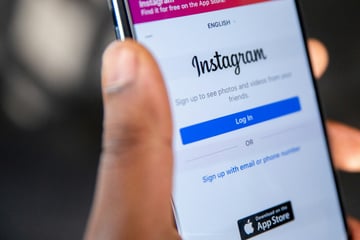Viral video shows just that TikTok still has a big problem with transparency and censorship
Culver City, California – In a time of hate speech and misinformation, social media platforms have been slowly stepping up their moderation efforts to protect their users. But some, like TikTok, might be going too far in the other direction.

If anything is having a moment right now, it's the balancing act between transparency and censorship.
Big tech and companies like Facebook and Twitter have been belatedly trying to curb the rise of slander, hate speech, and misinformation being spread across their platforms.
Instagram recently released a new feature that allows its users to block out hate speech in direct messages from strangers In an attempt to minimize the spread of hate speech on the app.
Meanwhile, the video sharing app also took a stab at cleaning up the content on its platform, but unlike Instagram, there wasn't a plan or set of guidelines transparently laid out.
This has been a recurring issue with TikTok, who have come under fire for actions like deleting videos and suspending accounts of plus-sized women without giving any reason or explanation.
Now, there's a whole new problem with the app's approach to captions. On TikTok, a user is able to provide captions of their spoken word for those who are hearing impaired, or just don't want to turn the sound on.
Censorship without reason

With the rise in hate crimes against Asian Americans, TikTok developers apparently decided to launch a feature that fights hate speech by censoring it out.
On the surface, this might seem like a sound idea. Why force people to read phrases that are demeaning, hurtful, and potentially racist?
There's just one issue with that – the platform is being wildly selective about what's being censored and refuses to release any set of guidelines, codes of conduct related to hate speech, or much of anything at all.
TikTok user Forrest Valkati outed the company's bizarre application of censorship in a video that now has 2.1 million views. Valkati runs through a list of phrases, such as "Black women," "Black men," "white women," and "white men."
Each phrase is spelled out, uncensored, in the closed captions. But things get interesting when Valkati says, "Asian women" or "Asian men". Inexplicably, only the initials appear, while the rest is censored in the captions.
"Any word it doesn't want you to say, any word that violates the guidelines, will be censored," Valkati said in his video.
Amazingly enough, his video seems to have created enough noise in TikTok's general direction, leading the company to remove these and other phrases, such as "white supremacy" and oddly enough "little girls," from their list.
The fact that the backlash led TikTok to changing its policy is a move in the right direction, but the core problem still remains – users still don't have access to the company's moderation guidelines or what type of content goes against the rules.
Hidden policies and account suspensions
In March 2020, The Intercept obtained several pages from TikTok's moderation guidelines, which allowed moderators to block videos and suspend accounts of those who were deemed "unattractive" by means of body size, attire, background setting, and even the straightness of their teeth.
When it comes to speech censorship, the company allegedly allows moderators to punish creators that say specific words or phrases they have deemed unfit for the app, though they don't go into detail on what those word choices might be.
There's a delicate balance that needs to be found between transparency and the imperative to protect users form harmful content.
What exactly that balance looks like for TikTok will have to be made clear sooner or later. Until then, users will continue to walk on an invisible tight rope and hope they don't miss a step.
Cover photo: 123rf/Sasha85ru
